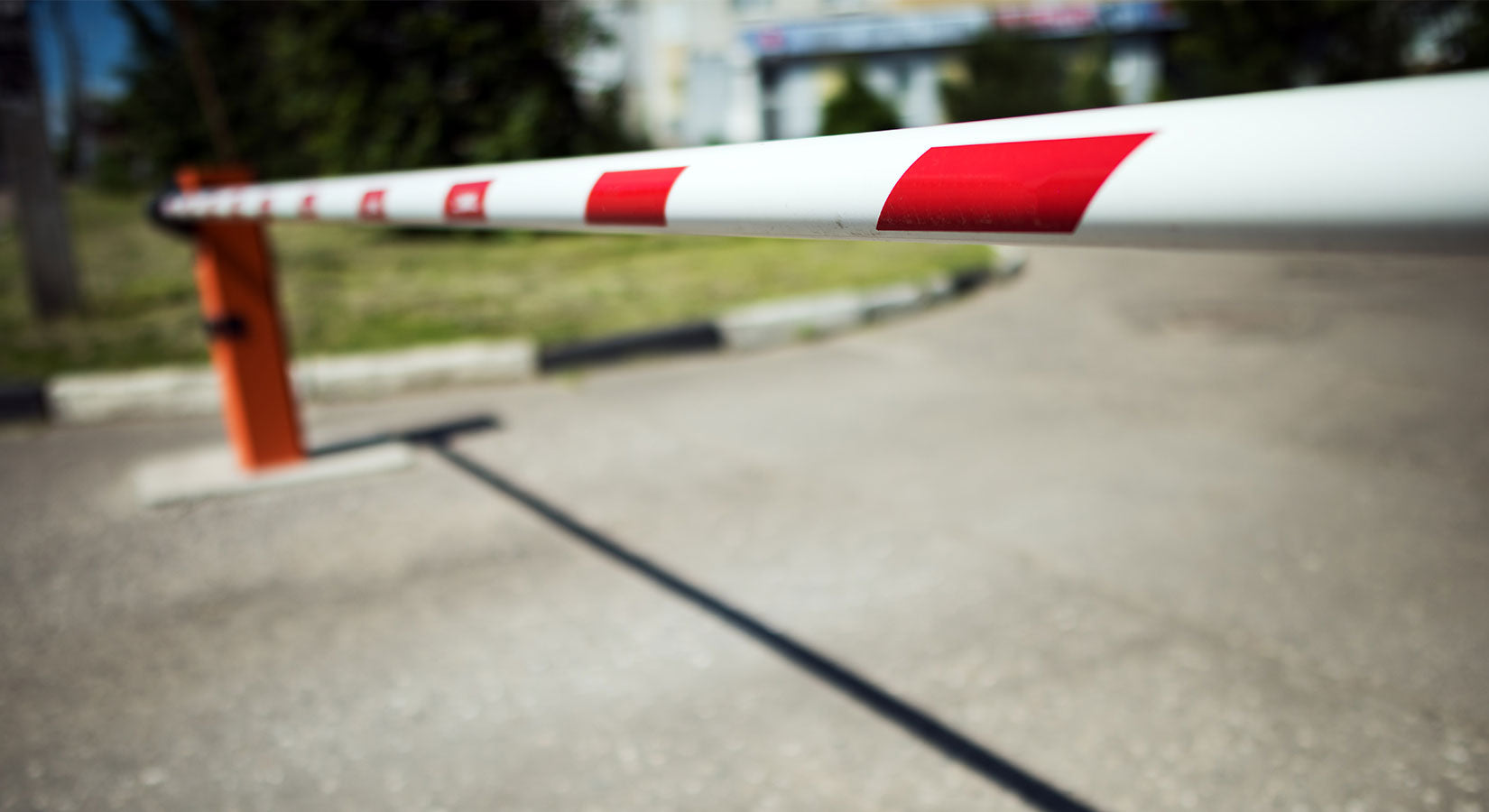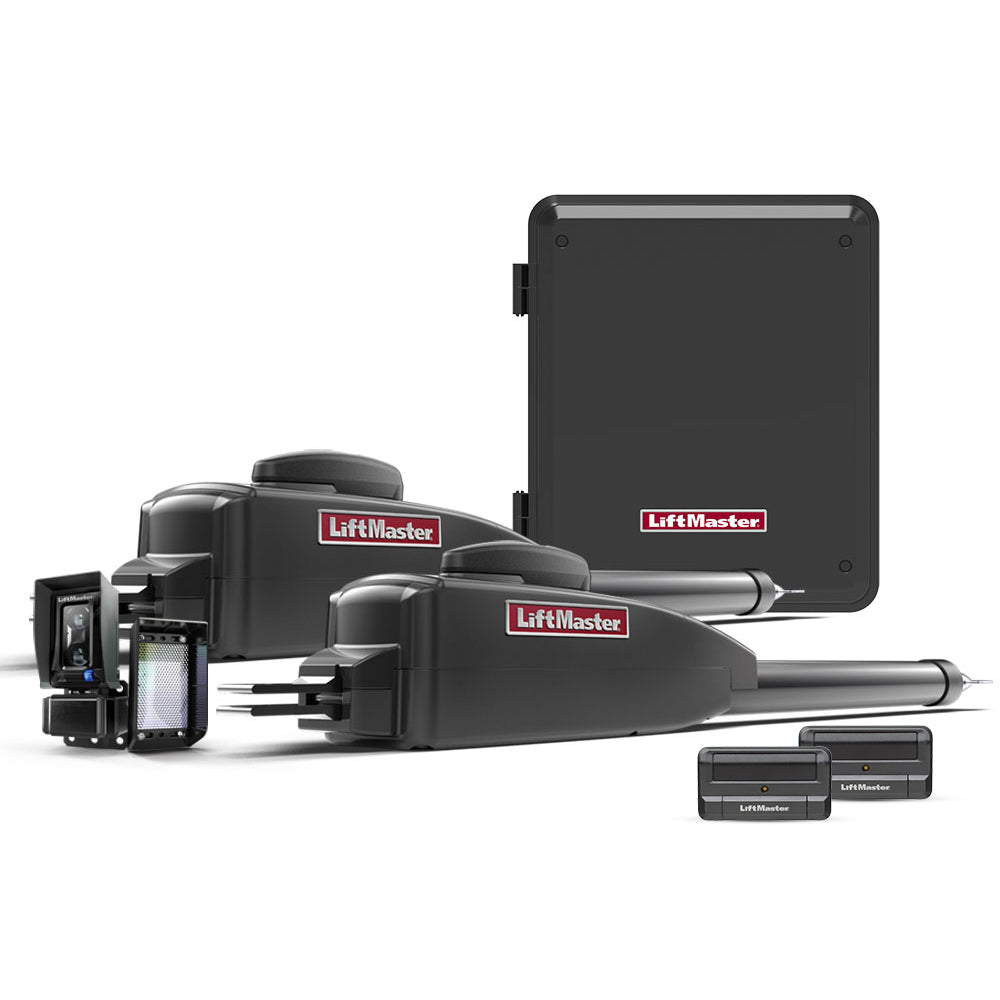Barrier gates come in various forms. For commercial or industrial settings, the most popular one is a wishbone barrier arm gate. These vary in size based on the number or width of traffic lanes. Barrier arm gate operators are more pocket-friendly when compared to their swing gate operator and slide gate counterparts. With minimal loading coupled with few moving parts, barrier arm operators should deliver excellent service for years down the road. Given that wishbone and standard arm barrier gates have a wealth of features, this guide will walk you through everything you need to know, including the installation cost.
Standard Barrier Arms

A single or standard barrier gate operator is best-suited for commercial or industrial applications, including manufacturing plants, banks, hospitals, and airports, to parking garages. These gates are in continuous use, with high traffic and durability in mind. A standard arm gate such as the LiftMaster Mega Arm Sprint Tower ranges from 8 feet to 15 feet in length and weighs up to 25 pounds.
Wishbone Barrier Arms
These barrier arms control wide traffic lanes in industrial sites, loading docks, and other areas. Wishbone barrier arms have double arms for enhanced stability. Furthermore, they extend further compared to their standard arm counterparts with a length of 15 feet to 28 feet mounted on the right or left side of the roadway.
Gate Control Alternatives
It’s no secret that there are various types of barrier arms. Similarly, you can control your gate operator in a boatload of ways. Regardless of whether your goal is to have a card reader, smartphone app, remote access, phone entry, or a PIN code, you’ll find the perfect gate operator control device for your project.
Barrier Arm Accessories
All barrier arm gates include accessories geared towards your particular project needs.
Spikes
These are perfect for applications that demand more traffic regulation and security. Traffic spikes are mounted on a concrete surface, built into a concrete footing, or temporarily deployed across a drive. Furthermore, they are available to come in no-access and one-way access counterparts. When a driver pulls up over the spikes in a single direction, they drop. From the opposite end, the spikes remain firmly in position. Furthermore, the spikes are expandable. You might add an extra section for increased coverage. Traffic spikes come in automated and mechanical configurations. The automated counterparts lower depending on the received commands from card readers, keypads, and other access control devices.
Traffic lights
These monitor traffic flow and inform a driver when to move forward. When there’s high traffic or the pressure to move forward, traffic lights come into play. They inform drivers beforehand of the barrier arm when they can stop or move forward. As a result, that eliminates guesswork about the arm going down or moving up. Moreover, it assists in curbing tailgating by informing the driver in the back that the arm will come down during a red light.
Coin Operation
There are still barrier gates in use that operate via the use of coins. Card or contactless payment, coin operation, or pay-on-entry systems require a pre-set monetary value before granting access. Some also offer a nearby change machine for users who prefer to pay solely via coins.
Proximity Detectors

These sensors are popular in high-traffic areas requiring quick processing. Proximity readers allow a device or card to be installed in the vehicle. That allows quick detection and access into the premises. Alternatively, you can opt for a bar code system. The detector senses the code at a given distance and grants access in a jiffy.
Barrier Arm Installation
To know the best position to install your barrier arm gate operator, here are a few factors to consider:
- Install it in the ideal location to stop traffic and not create a potential hazard for drivers. Put a barrier arm gate in an area that allows the vehicle to pull into the lane rather than being left exposed to quick-moving vehicular traffic.
- The traffic volume is a key aspect to consider. If the barrier arm gate only allows one car to safely pull into the lane, leaving other motorists to line up on a busy highway or street, consider realigning the traffic lane to move the barrier arm closer to the facility rather than farther away from it. Here’s also where proximity readers come into play.
- Barrier arm gates shouldn’t be an obstacle or safety hazard for drivers. Therefore, you should situate them off the drive. Likewise, you should put it in a place that is safe and pedestrian-friendly. That means you shouldn't install it on a busy sidewalk as it’s an obstacle when the pivot point is in operation.
- Barrier arm gates require control wiring and electricity. Therefore, you need to factor in where it makes sense to regulate wiring and draw power.
- Barrier arm gates will need solid footing or a concrete pad. After all, putting the arm behind a retaining wall or in loose landscape materials might not deliver the much-needed structural stability.
- The barrier arm length doesn’t need to get to the end of the roadway to get the job done. It only needs to be adequately long to prevent vehicles from driving around it.
How Much Does It Cost To Install Barrier Arm Gates?
You can get an automatic driveway barrier arm gate installed by an expert for anywhere between $1,000 and $12,000, depending on the accessories and the length. The labor may be up to $100 per hour.
To Wrap Up
As they say, knowledge is power. Now that you know the types of barrier arms, a few of the best options in the market, the price range of installation and labor, and the factors to consider in the installation process, you can make an informed decision based on your needs.












